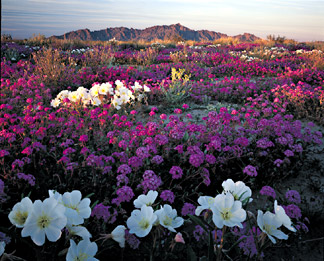
| Issue 2, Spring 2003 | ||||
In Depth: Having it All at HavasuWestern Arizona has been inundated with change, as cities and towns along the Colorado River grow with increasing tourism and retirement dollars. An influx of new money has brought power recreational users, such as ORV riders and personal watercraft enthusiasts, to previously mellow desert towns like Parker, Topock, and Hope. Many residents are struggling to hold on to a slower pace of life, which includes preserving open space in the face of development pressures that can alter community history on the land. But residents of western Arizona are ideally situated to embrace a proposal put forth by the Arizona Wilderness Coalition that could provide lasting safeguards for western Arizona heritage and its desert grandeur—a pitch for more than 180,000 acres of Wilderness, including spectacular areas on Crossman Peak, the Buckskin Mountains, Planet Peak, and Mohave Wash. The population of western Arizona has nearly doubled since these lands were studied as part of the Bureau of Land Management (BLM) Wilderness Inventory submitted for the Arizona Desert Wilderness Act of 1990.
The Coalition has evaluated these public lands—currently managed by the BLM Lake Havasu Field Office—and found that they contain outstanding wilderness characteristics. AWC has entered into the BLM’s public participation process for Lake Havasu to provide a wilderness alternative within the public land use decision-making process.
“The fact is, these lands are Wilderness already,” says AWC Western Deserts Regional Coordinator Jay Krienitz. “We are simply trying to give them the protection that will help preserve the way of life that has always existed out here. People who ride responsibly will see that favorite ORV areas and accessible wilderness vistas are still available to the local population.” In assessing the variety of areas now part of the AWC proposal, Krienitz and his team of wilderness inventory volunteers documented that the most physical impacts to the land were near or just outside of towns. This suggests that boundaries for recreational uses need to be put in place to prevent further off-road damage to the fragile desert ecosystems that surround towns like Parker, Kingman, and Lake Havasu City.
Parker, for example, holds a large off-road vehicle event—the Parker 400—in an area between two already-designated wilderness areas, the Gibraltar Mountains Wilderness and East Cactus Plain Wilderness, the southern boundary near the Swansea Wilderness, and north of Planet Peak proposed area. After-race partying often results in new trails and illegal corridors where ORV riders have camped and spent the day. “As many desert lovers know, the ecology here is fragile and unique,” says Krienitz. “The number of different species in the Sonoran Desert may be one of the highest in the world. The areas the AWC is proposing will help to keep the natural balance of these ecosystems intact. Recent studies show that roads and ORV destruction may be the single-largest threat to sensitive desert lands.” The AWC recently attended scoping meetings in several of the towns that abut the proposed wilderness, in effort to educate the citizens about the benefits of wilderness to local economies and to future generations. The response was less than welcoming. “The ORV community has become a political force to be reckoned with and is dominating public land meetings in western Arizona,” says Krienitz. “Many of them see no harm in driving off established or designated routes and roads.” Krienitz has seen comments that flowed forth from the first round of public meetings at the BLM’s Lake Havasu Field Office in February, many of which state that it is their “right” to travel into the heart of wild places that are not yet designated as Wilderness. “The BLM is obligated to mitigate this problem, as they are legally required to prevent unnecessary or undue degradation of lands considered for wilderness designation,” says Krienitz. The AWC is providing the BLM with a detailed narrative that describes the wilderness characteristics of the areas and significantly enhances prior BLM inventories. Krienitz is providing maps and photographic evidence and itemizing the species and recreational values of the areas. The results of AWC’s hard work will be rewarded in the fall, when the BLM presents the AWC wilderness proposal as one of its alternatives for the public to support at the next round of public meetings in late 2003. The AWC will need overwhelming support for its proposal to staunchly defeat the ORV contingent that has carved a user niche for itself into western Arizona’s economy. Stay tuned! |
||||
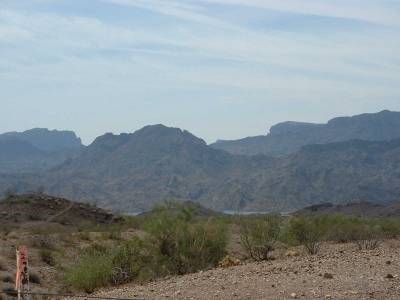
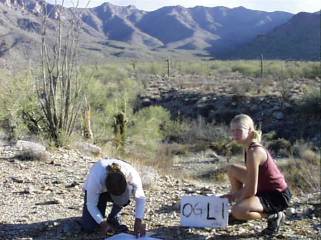
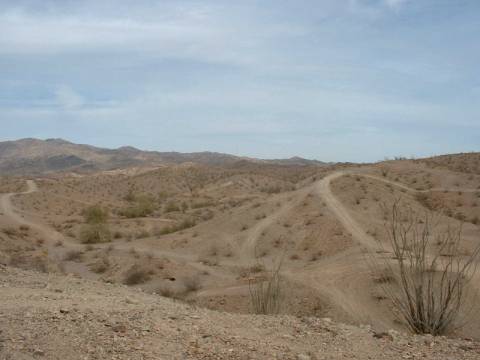
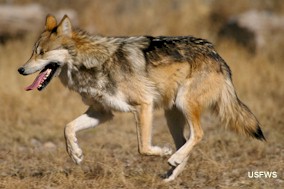
 Make your spring and early summer outdoor plans here! Visit our comprehensive
list of day outings, inventory trips, meetings, and upcoming AWC events for
the latest in wilderness “happenings” around the state.
Make your spring and early summer outdoor plans here! Visit our comprehensive
list of day outings, inventory trips, meetings, and upcoming AWC events for
the latest in wilderness “happenings” around the state. 